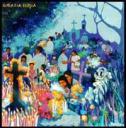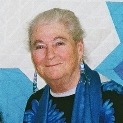Catholic Social Teaching and the Kingdom
On April 2, 2004 a special commission delivered a report on justice and peace to Pope St. John Paul II which he had requested. Known as the Compendium of the Social Doctrine of the Church, it is an overview of the teaching of the Church on justice and peace in society over the centuries.
This study reviews the importance of justice and peace in the Hebrew Scriptures and their fulfillment in Christ. Our salvation is not primarily an individual matter since we are called to God’s love and mercy in the community — the assembly of believers — the church. Our baptism plunges us into the death and resurrection of Christ and brings us to live in the very life of God as Father, Son, and Holy Spirit. We are part and parcel of the Mystical Body of Christ. We are called to be the compassion of God.
Justice and peace are signs that the Kingdom of Heaven that Jesus preached has become a reality. Jesus devoted his entire ministry to this one project, which Jesus as the Anointed One, the Christ as Divine Word continues to proclaim and to make real in the power of the Holy Spirit. The work of peace and justice began with the prophets and becomes the main work of Jesus on earth that leads to the supreme sacrifice of the His death and resurrection. Jesus’ mission of peace and justice was a very dangerous one during the Roman occupation of Israel and it led to his being tortured to death on a cross — a punishment reserved for terrorists and rebels.
The Gospel and the work of the Holy Trinity is not a political ideology. Justice and peace happen as the Creation unfolds every day in the Kingdom of Heaven. Jesus criticized and condemned the religious people of His day and their leaders for missing this obvious truth. From the earliest days of the Assembly (Church) in the Acts of the Apostles, we see prayer and worship unfold into miracles of healing, sharing of wealth, and transformation of society. Various movements, like the Franciscans in the Middle Ages, focused on bringing peace and justice and created a great European civilization.
Catholic social teaching became something more focused on changing social relationships and structures in the late 1800s during the Industrial Revolution. Humans had lived for the better part of 20,000 years as farmers, fishers, and hunters. It was a world lit only by fire. Simple machines were powered by humans or animals. Human society saw more change from 1850 to 1900 than it had seen in the previous 22,000 years. As stark as this jolt was, it was nothing compared to the information age revolution we are now experiencing.
During these last 140 years of war, revolution, and upheaval, Catholic lay leaders, bishops, popes, and the Second Vatican Council have all focused on ways to bring about peace and justice in new types of societies, including today a global society which we have never before experienced.
Read More














